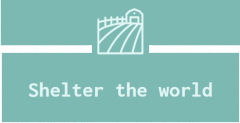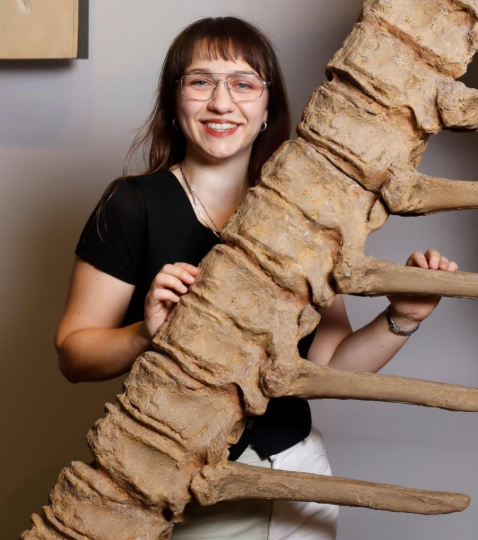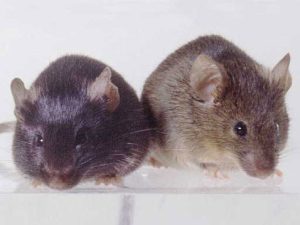In this week’s ‘Behind the Paper’ blog post, we’re making a web to catch some knowledge on spiders and their habitats. From their new paper “Landscape diversity can promote functional diversity of spider assemblages while habitat characteristics filter for specific traits“, Dana Liebke, a museum educator and public relations manager at the Museum of Natural History in Magdeburg, and co-authors explore an often hidden and forgotten about natural world – spider assemblages. Through their research, they uncover the intricacies of how important complex habitats are to even the smallest of critters, and why for spiders, maintaining these habitats boosts biodiversity. Additionally, Liebke shares how important it is to find joy outside of your career as well, weaving a web full of fun, joy, and excitement!
1. About the Research
Over the past few decades, farmlands worldwide have become more and more simplified. Semi-natural areas like wildflower strips, small patches of grass, or hedgerows — places that don’t directly produce crops — have often been removed to make room for larger fields. Of course, this helps increase food production. But it also comes at a cost — the loss of biodiversity associated with this kind of landscape simplification can have serious effects, even for farming itself. Many of the organisms that disappear when natural habitats vanish can be considered beneficial to agriculture. Take spiders, for example. Spiders have the potential to act as incredible natural pest controllers, since they can eat many of the pest species that reduce yields. So, by losing spiders, we may also be losing some of our best allies in the field.
With that in mind, this research was trying to uncover how spiders respond to changes in the agricultural landscape. Do they depend more on the kind of habitat they live in — the middle or edge of a wheat field or the grassy margin next to it — or on how diverse the entire surrounding landscape is? And do these differences affect not just how many spiders live there, but what kinds of spiders we find — for example, large or small ones, web-builders or free-hunters, long-distance travellers or those that stay put?
2. About the Study
During the course of this research I, for the first time, actually grasped how much planning and work had to be put into such a large-scale experiment! Building on the work of my always helpful co-authors and under the supervision of Prof. Catrin Westphal and the amazingly resilient and kind Marco Ferrante, my dear colleague Martin Wollenweber and I, spent months on this experiment. After hours spent on the phone with landowners and preparing materials for pitfall traps, it was finally time for field work. We installed the traps and collected samples under the blistering summer sun of ´22 — all while simultaneously cleaning and sorting samples from previous days.
While lab work isn’t all fun and games either, I was genuinely thrilled to spend a good chunk of my master’s thesis (and my time as a student assistant) identifying spiders in the lab — 2,119 individuals from 72 species to be exact. What others might consider monotonous work; I used as a quiet meditation on the beauty of spider diversity. Generations of taxonomists before me surely spent more than a few Saturday evenings hunched over spiders floating in ethanol! Nonetheless, during the later stages of research, I noticed how little is still known about many of our abundant, eight-legged friends. Realizing how many resources went into gaining just a few key numbers and p-values made me proud to expand the work from my master’s thesis, and publish this paper with my co-authors.
Looking at our results, one thing stood out: the type of habitat really mattered. Spider communities inside wheat fields were less diverse in their traits compared to those from the field edges or the grassy margins. The grass margins in particular hosted unique species that tended to be larger, more active hunters, and less likely to use ballooning — a form of aerial dispersion where spiders use silk threads to fly (or rather sail) large distances through the air. We also found that the complexity of the surrounding landscape had a smaller but still positive effect. More complex landscapes supported a greater variety of spider traits, but it didn’t make a big difference in the total number of spiders or species. In simple terms: the structure of the immediate habitat has the biggest influence on which spiders we find and what roles they play in the ecosystem, but the broader landscape still helps. Most importantly, those grassy strips along field edges — the ones we sometimes overlook — are vital refuges. They give larger, free-hunting spiders a safe place to live, which can, in turn, help control pests naturally.
These results remind us that even small patches of natural vegetation can make a big difference. By keeping or restoring these areas, farmers can support biodiversity and make their fields more resilient — creating agricultural landscapes that work with nature, not against it.
3. About the Author
I’ve been fascinated by “creepy crawlies” since I was a kid — especially spiders. I was blessed with a support network that encouraged me to follow my childhood dream of becoming a biologist (how cliché!), even if some were worried, I would never find a job “looking at critters”. Thankfully, that curiosity carried me through a Master’s degree focused on animal ecology and eventually into a career that blends science and storytelling.
While I didn’t pursue a PhD, I followed advice from Róbert Gallé, who approached me after my presentation at the 2023 Annual Meeting of the Ecological Society. He encouraged me to explore science communication — especially public speaking — as a career path. After giving his advice serious thought and reconnecting with my long-standing interest in museums, I now work as an educator at the Museum of Natural History in Magdeburg, helping people of all ages connect with nature through curiosity, science, and a little humour.
I have a feeling that this will not be the end of my scientific career, but for now I have found a place that is both comfortable and stimulating. I’m balancing full-time work, being a “cool” first-time aunt, chipping away at the absurdly high tower of sci-fi books beside my bed, and spending my weekends between hiking trips and Techno festivals with my friends. To all the other young scientists out there: Laugh, be free, and “Don’t let the bastards grind you down”!
Leave a comment





